|
Textos de IA não têm alma?
2025-10-23 writing essays drafts Reflexões do meu amigo Tsar: > Será que NPCs -- pessoas que não relatam ter um diálogo interno -- vão ter um índice de erro em adivinhar se um determinado texto é feito por IA muito maior que não-NPCs?
|
|
Como fazer exercícios
2025-10-02 drafts body > > Knowing is not enough, you must apply; willing is not enough, you must do. > > If you always put limits on everything you do, physical or anything else, it will spread into your work and into your life. There are no limits. There are only plateaus, and you must not stay there, you must go beyond them.
|
|
Flow: The Psychology of Optimal Experience (Mihaly Csikszentmihalyi, 1990)
2020-09-27 drafts flow self books Este é um dos livros mais importantes que já li e acredito que pode ser muito importante para você também. Por isso quero dedicar algumas linhas para argumentar por que você deve lê-lo, ainda que ele seja denso demais para a maioria das pessoas.
|
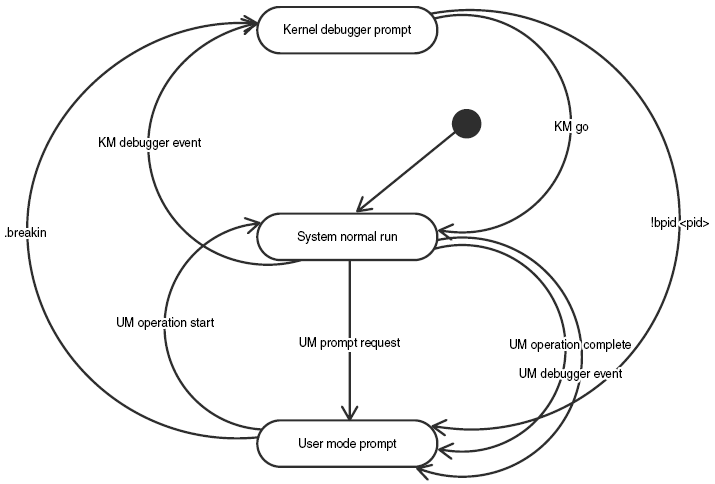 Kernel Mode >> User Mode, ou Como Fazer Debug de User Mode pelo Kernel Mode
2008-05-13 drafts windbg computer Existem algumas situações onde um depurador WYSIWYG é artigo de luxo. Imagine o seguinte: temos um serviço que inicia automagicamente antes do login do Windows, e possivelmente antes mesmo do ambiente gráfico. Esse serviço tem algum problema que impede que ele funcione sob as circunstâncias de inicialização do sistema. O que fazer? Atachar o WinDbg no processo?
Kernel Mode >> User Mode, ou Como Fazer Debug de User Mode pelo Kernel Mode
2008-05-13 drafts windbg computer Existem algumas situações onde um depurador WYSIWYG é artigo de luxo. Imagine o seguinte: temos um serviço que inicia automagicamente antes do login do Windows, e possivelmente antes mesmo do ambiente gráfico. Esse serviço tem algum problema que impede que ele funcione sob as circunstâncias de inicialização do sistema. O que fazer? Atachar o WinDbg no processo?
|
|
Read The Functional Manual
2008-05-07 drafts Percebi essa semana que talvez boa parte da população informática que não progride em suas habilidades, mas gostaria muito, pode ser impedida pela falta de hábito em ler a ajuda do programa | da linguagem | do sistema com calma para encontrar o que procura. Independente do que você é, e para onde quer chegar, saiba que nem tudo na vida pode ser perguntado ao seu colega de baia. Senão você não evolui!
|
|
CSI: Crashed Server Investigation?
2008-04-23 drafts O artigo de Jeff Dailey, The Digital DNA of Bugs Dump Analysis as Forensic Science, em que ele compara a nossa atividade de "cientistas do debugging" com a atividade dos profissionais da análise forense, é exatamente o que eu penso sobre nossa profissão. Freqüentemente assisto à série CSI: Las Vegas e mais freqüentemente ainda uso os métodos científicos empregados pela equipe de Gil Grissom para resolver os problemas mais escabrosos que podem ocorrer em um sistema.
|
|
Ode ao C++
2008-04-21 drafts ccpp computer Strauss: lembra quando nós conversávamos sobre o assunto "Por que C++?", há muitas décadas atrás, e seu blogue era um dos primeiros no Brasil que não ficava relatando o que o autor comia no café da manhã, além de falar sobre programação? Pois é, eu estava reorganizando meus g-mails e reencontrei nossa conversa e, pior, seu artigo "derivado" dela, que irei republicar aqui pois, assim como antes, acredito em tudo que escrevi naquela época.
|
 Conversor de Houaiss para Babylon - parte 2
2008-04-08 drafts projects computer Após algumas semanas de suspense, chegamos finalmente à nossa segunda e última parte da saga do dicionário Houaiss. Como devem [estar lembrados], a primeira parte se dispôs a desmontar a ofuscação usada nos arquivos do dicionário para permitir nossa posterior análise, com o simples e justo objetivo de importá-lo para o Babylon, cujas funcionalidades de busca são bem superiores.
Conversor de Houaiss para Babylon - parte 2
2008-04-08 drafts projects computer Após algumas semanas de suspense, chegamos finalmente à nossa segunda e última parte da saga do dicionário Houaiss. Como devem [estar lembrados], a primeira parte se dispôs a desmontar a ofuscação usada nos arquivos do dicionário para permitir nossa posterior análise, com o simples e justo objetivo de importá-lo para o Babylon, cujas funcionalidades de busca são bem superiores.
|
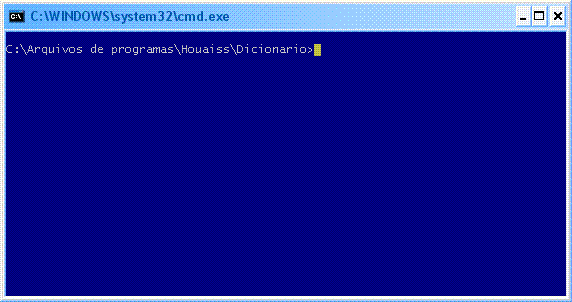 Conversor de Houaiss para Babylon - parte 1
2008-02-27 drafts projects computer Este artigo é sobre desmontar e montar novamente. Iremos descobrir como as entradas do dicionário Houaiss eletrônico estão gravadas em um primeiro momento, para depois remontarmos essa informação de maneira que ela possa ser usada em outro dicionário de uso mais flexível, o Babylon. Ou seja, este não é um guia de vandalismo. Estava apenas querendo usar um dicionário de qualidade excelente em outro dicionário cuja interface é muito boa.
Conversor de Houaiss para Babylon - parte 1
2008-02-27 drafts projects computer Este artigo é sobre desmontar e montar novamente. Iremos descobrir como as entradas do dicionário Houaiss eletrônico estão gravadas em um primeiro momento, para depois remontarmos essa informação de maneira que ela possa ser usada em outro dicionário de uso mais flexível, o Babylon. Ou seja, este não é um guia de vandalismo. Estava apenas querendo usar um dicionário de qualidade excelente em outro dicionário cuja interface é muito boa.
|
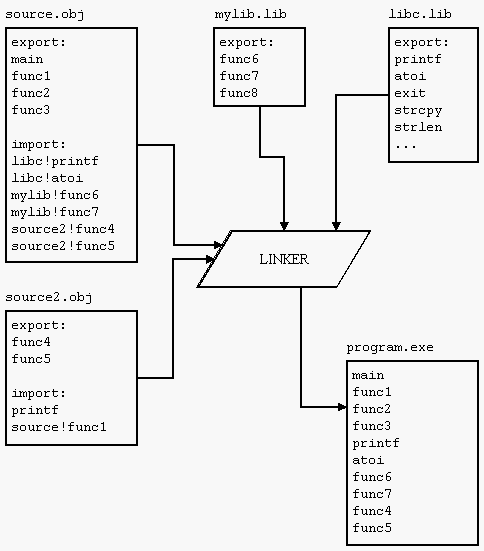 Os diferentes erros na linguagem C
2008-02-15 drafts ccpp computer Uma coisa que me espanta de vez em quando é o total desconhecimento por programadores mais ou menos experientes dos níveis de erros que podem ocorrer em um fonte escrito em C ou C++. Desconheço o motivo, mas desconfio que o fato de outras linguagens não terem essa divisão de processos pode causar alguma nivelação entre as linguagens e fazer pensar que o processo de compilação em C é como em qualquer outra linguagem.
Os diferentes erros na linguagem C
2008-02-15 drafts ccpp computer Uma coisa que me espanta de vez em quando é o total desconhecimento por programadores mais ou menos experientes dos níveis de erros que podem ocorrer em um fonte escrito em C ou C++. Desconheço o motivo, mas desconfio que o fato de outras linguagens não terem essa divisão de processos pode causar alguma nivelação entre as linguagens e fazer pensar que o processo de compilação em C é como em qualquer outra linguagem.
|
|
Desconstruindo IOCCC
2008-02-11 drafts computer Como alguns devem saber, e outros não (ou não deveriam), existe uma competição internacional para escolher quem escreve o código em C mais ofuscado. Isso mesmo. O evento se chama [The International Obfuscated C Code Contest] (IOCCC resumidamente) e costuma premiar anualmente os melhores "do ramo" com a chamada "menção desonrosa".
|
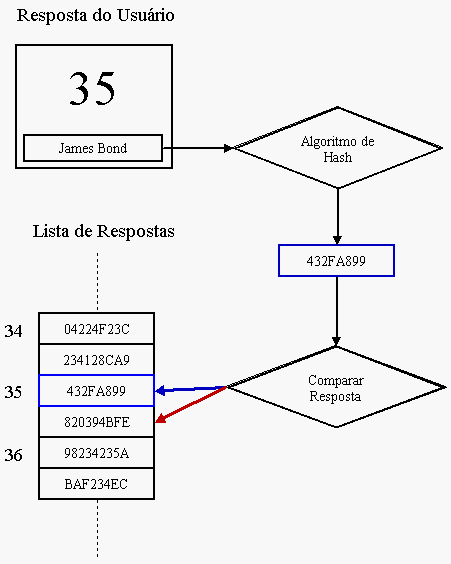 Encontrando as respostas do Flash Pops
2008-01-16 drafts computer Existia uma série de jogos no sítio da UOL chamado Flash Pops onde você deve acertar o nome de filmes, programas de televisão, entre outros, que vão da década de 40 até a atualidade. É divertido e viciante fazer pesquisa na internet para encontrar os resultados, ainda mais quando já se é viciado em cinema. Ficamos jogando, eu e minha namorada, por semanas a fio. Quase chegamos a preencher tudo, e por um bom tempo ficamos travados para terminar. Então começamos a apelar para o Google e o IMDB até os limites do razoável. Nesse fim de semana, por exemplo, chegamos a assistir um filme de madrugada onde tocou rapidamente um trecho de uma das músicas que faltava no jogo sobre televisão. No dia seguinte procuramos a trilha sonora do filme, ouvimos faixa a faixa e procuramos o nome da música no Google, para finalmente encontrar o resultado.
Encontrando as respostas do Flash Pops
2008-01-16 drafts computer Existia uma série de jogos no sítio da UOL chamado Flash Pops onde você deve acertar o nome de filmes, programas de televisão, entre outros, que vão da década de 40 até a atualidade. É divertido e viciante fazer pesquisa na internet para encontrar os resultados, ainda mais quando já se é viciado em cinema. Ficamos jogando, eu e minha namorada, por semanas a fio. Quase chegamos a preencher tudo, e por um bom tempo ficamos travados para terminar. Então começamos a apelar para o Google e o IMDB até os limites do razoável. Nesse fim de semana, por exemplo, chegamos a assistir um filme de madrugada onde tocou rapidamente um trecho de uma das músicas que faltava no jogo sobre televisão. No dia seguinte procuramos a trilha sonora do filme, ouvimos faixa a faixa e procuramos o nome da música no Google, para finalmente encontrar o resultado.
|
|
Curiosidades inúteis: o operador de subscrito em C++
2007-12-27 drafts computer Este artigo é uma reedição de meu blogue antigo, guardado para ser republicado durante minhas miniférias. Esteja à vontade para sugerir outros temas obscuros sobre a linguagem C ou C++ de sua preferência. Boa leitura!
|
|
O que acontece quando o contador estoura
2007-12-25 drafts computer Dois conceitos de programação relacionados a limites computacionais são bem conhecidos do programador: o famigerado overflow e o não-tão-famoso underflow (embora seja fácil imaginar que ele é o oposto do primeiro). O primeiro ocorre quando somamos a uma variável inteira não-nula um valor cujo resultado não consegue ser representado pelo tamanho de memória usado para armazenar esse tipo inteiro (que pode ser um caractere, um inteiro curto, inteiro longo e por aí vai). O underflow, por outro lado (outro lado mesmo), é o resultado de uma subtração que não pode ser representado pelo número de bits do seu tipo inteiro.
|
 Guia básico para programadores de primeiro breakpoint
2007-10-22 drafts computer Aproveitando um dos últimos artigos que fala sobre [conceitos básicos de programação], lembro que, tão importante quanto programar é possuir habilidades básicas de depuração, uma arte por muitos programadores ignorada.
Guia básico para programadores de primeiro breakpoint
2007-10-22 drafts computer Aproveitando um dos últimos artigos que fala sobre [conceitos básicos de programação], lembro que, tão importante quanto programar é possuir habilidades básicas de depuração, uma arte por muitos programadores ignorada.
|
 Guia básico para programadores de primeiro int main
2007-10-16 drafts computer > Vou aproveitar que meu amigo DQ publicou um artigo muito bom sobre [como fazer programas fáceis de manter] (merece ser lido!) e vou republicar um artigo do blogue antigo sobre o básico do básico para quem deseja entender como os programas funcionam. Não é nada sofisticado, apenas alguns conceitos comuns que, se você deseja ser programador, deveria procurar saber.
Guia básico para programadores de primeiro int main
2007-10-16 drafts computer > Vou aproveitar que meu amigo DQ publicou um artigo muito bom sobre [como fazer programas fáceis de manter] (merece ser lido!) e vou republicar um artigo do blogue antigo sobre o básico do básico para quem deseja entender como os programas funcionam. Não é nada sofisticado, apenas alguns conceitos comuns que, se você deseja ser programador, deveria procurar saber.
|
 A Linguagem de Programação C: O Livro
2007-10-12 drafts computer books ccpp O clássico de Ritchie e Kernighan, criadores da linguagem C, não foi meu primeiro livro de programação. E nem deveria ser. Não o recomendo para iniciantes, pois é necessário possuir algum conhecimento e prática para realmente aproveitar os conceitos desse livro.
A Linguagem de Programação C: O Livro
2007-10-12 drafts computer books ccpp O clássico de Ritchie e Kernighan, criadores da linguagem C, não foi meu primeiro livro de programação. E nem deveria ser. Não o recomendo para iniciantes, pois é necessário possuir algum conhecimento e prática para realmente aproveitar os conceitos desse livro.
|
|
Cronogramas
2007-10-04 drafts Nunca fui muito bom em definir cronogramas e nunca conheci alguém que fosse. Porém, ultimamente, no conforto do lar (férias), estou me saindo razoavelmente bem ao aplicar no meu dia-a-dia algumas regras que estabeleci como sendo boas pra mim. Não são regras que baixei do sítio do Joel nem é um design pattern, mas já me ajudam um bocado. Gostaria de compartilhá-las com meus pontuais leitores, que sempre entregam seus projetos em dia e nunca se esquecem de comentar uma linha de código sequer. Vocês são meu objetivo de vida e motivo de orgulho deste humilde blogue, que se esmera a cada dia que passa para ser fiel à inegável qualidade do meu público. Quando crescer quero ser igual a vocês.
|
|
Developer: you need to know English!
2007-09-28 drafts Eu realmente gostei desse negócio de tagging. =) Aproveitando o comentário do Ferdinando sobre o novo sistema de tradução eletrônica do MSDN, lanço aqui algumas dicas para aprender a tão falada língua de Shakespeare. Acredite, se você deseja ser um melhor programador, inglês é fundamental.
|
|
Antidebug: Detectando Attach
2007-09-10 drafts antidebug projects computer Hoje foi um belo dia para engenharia reversa e análise de proteções. Dois ótimos programas vieram ao meu conhecimento: um [monitor de chamadas de API] e um [monitor de chamadas de COM] (complementando o primeiro, que não monitora funções depois que CoCreateInstance foi chamado). Além de que no site do primeiro programa - de algum entusiasta do bom e velho Assembly Win32, diga-se de passagem - encontrei o código-fonte para mais uma técnica antidebugging, o que nos leva de volta para a já consagrada série de técnicas antidepuração.
|
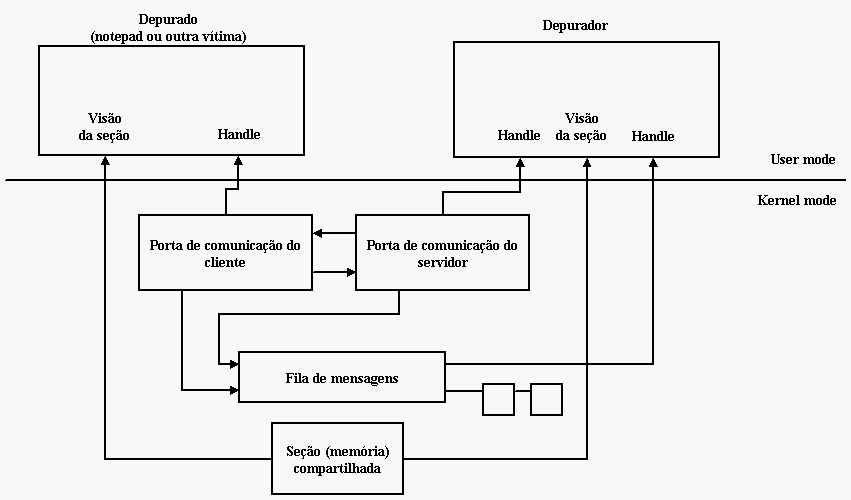 Antidebug: ocupando a DebugPort
2007-08-23 drafts projects computer Quando um depurador inicia um processo para ser depurado ou, o caso abordado por este artigo, se conecta em um processo já iniciado, as comunicações entre esses dois processos é feita através de um recurso interno do Windows chamado de LPC (Local Procedure Call). O sistema cria uma "porta mágica" de comunicação específica para a depuração e os eventos trafegam por meio dela.
Antidebug: ocupando a DebugPort
2007-08-23 drafts projects computer Quando um depurador inicia um processo para ser depurado ou, o caso abordado por este artigo, se conecta em um processo já iniciado, as comunicações entre esses dois processos é feita através de um recurso interno do Windows chamado de LPC (Local Procedure Call). O sistema cria uma "porta mágica" de comunicação específica para a depuração e os eventos trafegam por meio dela.
|
|
Antidebug: interpretação baseada em exceção (parte 2)
2007-08-09 drafts projects computer No [primeiro artigo] vimos como é possível "enganar" o depurador através de exceções e assim fazer o atacante perder um tempo considerável tentando se desvencilhar dos breakpoints de mentira. Porém, vimos também que essa é uma solução difícil de manter no código-fonte, além de possuir o ponto fraco de ser facilmente contornada se descoberta. Agora é a hora de tornar as coisas mais fáceis de manter e ao mesmo tempo garantir maior dificuldade mesmo que o atacante descubra o que está acontecendo debaixo do seu nariz.
|
|
Antidebug: interpretação baseada em exceção (parte 1)
2007-07-20 drafts projects computer Um depurador utiliza breakpoints para "paralisar" momentaneamente a execução do programa sendo depurado. Para isso ele se utiliza de uma bem conhecida instrução conhecida como int 3. Essa instrução gera uma exceção -- exceção de breakpoint -- que é capturada pelo sistema operacional e repassada para o código de tratamento dessa exceção. Em programas sendo depurados esse código está localizado no depurador. Em programas "livres" esse código normalmente não existe e ao acontecer essa exceção o aplicativo simplesmente "capota".
|
|
A Inteligência do if: Parte 2
2007-06-29 drafts assembly philosophy programming computer Vimos na [primeira parte] desse artigo como o if revolucionou o mundo da computação ao trazer um salto que depende de condições anteriores e, portanto, depende do estado do programa. A ele chamamos de salto condicional. Também vimos como o resto das construções lógicas de uma linguagem são apenas derivações montadas a partir de saltos condicionais e incondicionais. Nesta segunda parte veremos como implementar um saldo condicional baseando-se no fato de que o computador pode apenas realizar operações matemáticas. Afinal de contas, um computador não "pensa".
|
|
A Inteligência do if: Parte 1
2007-06-18 drafts assembly philosophy programming computer No nível mais baixo, podemos dizer que as instruções de um computador se baseiam simplesmente em cálculos matemáticos e manipulação de memória. E entre os tipos de manipulação existe aquela que muda o endereço da próxima instrução que será executada. A essa manipulação damos o nome de salto.
|
 Kernel Mode >> User Mode, ou Como Fazer Debug de User Mode pelo Kernel Mode
2008-05-13 drafts windbg computer Existem algumas situações onde um depurador WYSIWYG é artigo de luxo. Imagine o seguinte: temos um serviço que inicia automagicamente antes do login do Windows, e possivelmente antes mesmo do ambiente gráfico. Esse serviço tem algum problema que impede que ele funcione sob as circunstâncias de inicialização do sistema. O que fazer? Atachar o WinDbg no processo?
Kernel Mode >> User Mode, ou Como Fazer Debug de User Mode pelo Kernel Mode
2008-05-13 drafts windbg computer Existem algumas situações onde um depurador WYSIWYG é artigo de luxo. Imagine o seguinte: temos um serviço que inicia automagicamente antes do login do Windows, e possivelmente antes mesmo do ambiente gráfico. Esse serviço tem algum problema que impede que ele funcione sob as circunstâncias de inicialização do sistema. O que fazer? Atachar o WinDbg no processo?
 Conversor de Houaiss para Babylon - parte 2
2008-04-08 drafts projects computer Após algumas semanas de suspense, chegamos finalmente à nossa segunda e última parte da saga do dicionário Houaiss. Como devem [estar lembrados], a primeira parte se dispôs a desmontar a ofuscação usada nos arquivos do dicionário para permitir nossa posterior análise, com o simples e justo objetivo de importá-lo para o Babylon, cujas funcionalidades de busca são bem superiores.
Conversor de Houaiss para Babylon - parte 2
2008-04-08 drafts projects computer Após algumas semanas de suspense, chegamos finalmente à nossa segunda e última parte da saga do dicionário Houaiss. Como devem [estar lembrados], a primeira parte se dispôs a desmontar a ofuscação usada nos arquivos do dicionário para permitir nossa posterior análise, com o simples e justo objetivo de importá-lo para o Babylon, cujas funcionalidades de busca são bem superiores.
 Conversor de Houaiss para Babylon - parte 1
2008-02-27 drafts projects computer Este artigo é sobre desmontar e montar novamente. Iremos descobrir como as entradas do dicionário Houaiss eletrônico estão gravadas em um primeiro momento, para depois remontarmos essa informação de maneira que ela possa ser usada em outro dicionário de uso mais flexível, o Babylon. Ou seja, este não é um guia de vandalismo. Estava apenas querendo usar um dicionário de qualidade excelente em outro dicionário cuja interface é muito boa.
Conversor de Houaiss para Babylon - parte 1
2008-02-27 drafts projects computer Este artigo é sobre desmontar e montar novamente. Iremos descobrir como as entradas do dicionário Houaiss eletrônico estão gravadas em um primeiro momento, para depois remontarmos essa informação de maneira que ela possa ser usada em outro dicionário de uso mais flexível, o Babylon. Ou seja, este não é um guia de vandalismo. Estava apenas querendo usar um dicionário de qualidade excelente em outro dicionário cuja interface é muito boa.
 Os diferentes erros na linguagem C
2008-02-15 drafts ccpp computer Uma coisa que me espanta de vez em quando é o total desconhecimento por programadores mais ou menos experientes dos níveis de erros que podem ocorrer em um fonte escrito em C ou C++. Desconheço o motivo, mas desconfio que o fato de outras linguagens não terem essa divisão de processos pode causar alguma nivelação entre as linguagens e fazer pensar que o processo de compilação em C é como em qualquer outra linguagem.
Os diferentes erros na linguagem C
2008-02-15 drafts ccpp computer Uma coisa que me espanta de vez em quando é o total desconhecimento por programadores mais ou menos experientes dos níveis de erros que podem ocorrer em um fonte escrito em C ou C++. Desconheço o motivo, mas desconfio que o fato de outras linguagens não terem essa divisão de processos pode causar alguma nivelação entre as linguagens e fazer pensar que o processo de compilação em C é como em qualquer outra linguagem.
 Encontrando as respostas do Flash Pops
2008-01-16 drafts computer Existia uma série de jogos no sítio da UOL chamado Flash Pops onde você deve acertar o nome de filmes, programas de televisão, entre outros, que vão da década de 40 até a atualidade. É divertido e viciante fazer pesquisa na internet para encontrar os resultados, ainda mais quando já se é viciado em cinema. Ficamos jogando, eu e minha namorada, por semanas a fio. Quase chegamos a preencher tudo, e por um bom tempo ficamos travados para terminar. Então começamos a apelar para o Google e o IMDB até os limites do razoável. Nesse fim de semana, por exemplo, chegamos a assistir um filme de madrugada onde tocou rapidamente um trecho de uma das músicas que faltava no jogo sobre televisão. No dia seguinte procuramos a trilha sonora do filme, ouvimos faixa a faixa e procuramos o nome da música no Google, para finalmente encontrar o resultado.
Encontrando as respostas do Flash Pops
2008-01-16 drafts computer Existia uma série de jogos no sítio da UOL chamado Flash Pops onde você deve acertar o nome de filmes, programas de televisão, entre outros, que vão da década de 40 até a atualidade. É divertido e viciante fazer pesquisa na internet para encontrar os resultados, ainda mais quando já se é viciado em cinema. Ficamos jogando, eu e minha namorada, por semanas a fio. Quase chegamos a preencher tudo, e por um bom tempo ficamos travados para terminar. Então começamos a apelar para o Google e o IMDB até os limites do razoável. Nesse fim de semana, por exemplo, chegamos a assistir um filme de madrugada onde tocou rapidamente um trecho de uma das músicas que faltava no jogo sobre televisão. No dia seguinte procuramos a trilha sonora do filme, ouvimos faixa a faixa e procuramos o nome da música no Google, para finalmente encontrar o resultado.
 Guia básico para programadores de primeiro breakpoint
2007-10-22 drafts computer Aproveitando um dos últimos artigos que fala sobre [conceitos básicos de programação], lembro que, tão importante quanto programar é possuir habilidades básicas de depuração, uma arte por muitos programadores ignorada.
Guia básico para programadores de primeiro breakpoint
2007-10-22 drafts computer Aproveitando um dos últimos artigos que fala sobre [conceitos básicos de programação], lembro que, tão importante quanto programar é possuir habilidades básicas de depuração, uma arte por muitos programadores ignorada.
 Guia básico para programadores de primeiro int main
2007-10-16 drafts computer > Vou aproveitar que meu amigo DQ publicou um artigo muito bom sobre [como fazer programas fáceis de manter] (merece ser lido!) e vou republicar um artigo do blogue antigo sobre o básico do básico para quem deseja entender como os programas funcionam. Não é nada sofisticado, apenas alguns conceitos comuns que, se você deseja ser programador, deveria procurar saber.
Guia básico para programadores de primeiro int main
2007-10-16 drafts computer > Vou aproveitar que meu amigo DQ publicou um artigo muito bom sobre [como fazer programas fáceis de manter] (merece ser lido!) e vou republicar um artigo do blogue antigo sobre o básico do básico para quem deseja entender como os programas funcionam. Não é nada sofisticado, apenas alguns conceitos comuns que, se você deseja ser programador, deveria procurar saber.
 A Linguagem de Programação C: O Livro
2007-10-12 drafts computer books ccpp O clássico de Ritchie e Kernighan, criadores da linguagem C, não foi meu primeiro livro de programação. E nem deveria ser. Não o recomendo para iniciantes, pois é necessário possuir algum conhecimento e prática para realmente aproveitar os conceitos desse livro.
A Linguagem de Programação C: O Livro
2007-10-12 drafts computer books ccpp O clássico de Ritchie e Kernighan, criadores da linguagem C, não foi meu primeiro livro de programação. E nem deveria ser. Não o recomendo para iniciantes, pois é necessário possuir algum conhecimento e prática para realmente aproveitar os conceitos desse livro.
 Antidebug: ocupando a DebugPort
2007-08-23 drafts projects computer Quando um depurador inicia um processo para ser depurado ou, o caso abordado por este artigo, se conecta em um processo já iniciado, as comunicações entre esses dois processos é feita através de um recurso interno do Windows chamado de LPC (Local Procedure Call). O sistema cria uma "porta mágica" de comunicação específica para a depuração e os eventos trafegam por meio dela.
Antidebug: ocupando a DebugPort
2007-08-23 drafts projects computer Quando um depurador inicia um processo para ser depurado ou, o caso abordado por este artigo, se conecta em um processo já iniciado, as comunicações entre esses dois processos é feita através de um recurso interno do Windows chamado de LPC (Local Procedure Call). O sistema cria uma "porta mágica" de comunicação específica para a depuração e os eventos trafegam por meio dela.